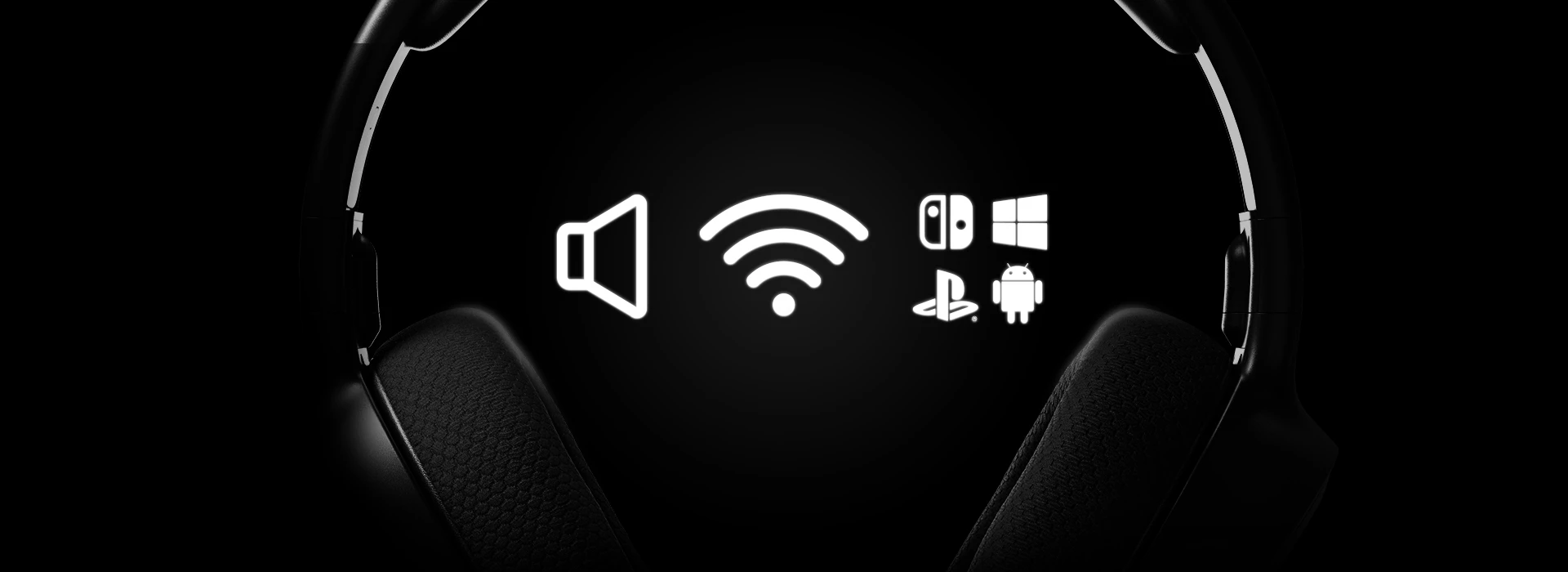
Bluetooth vs. USB Wireless
Which is better for Nintendo Switch and mobile?

What are the differences between these two types of wireless, and which one is best for gaming?
When it comes to wireless audio on your phone, the first thing you probably think of is Bluetooth.
There’s a good reason for that: Bluetooth is an incredibly useful technology. It provides wireless audio connectivity with nearly universal compatibility across a slew of different device types. The convenience of Bluetooth certainly cannot be overlooked.
However, when it comes to gaming, there are some significant drawbacks and limitations of Bluetooth.
Problem #1: Latency
Everyone knows that in any game, latency is the enemy. We aim for the lowest ping times, the fastest refresh rates… anything to make the game visually as quick and snappy as possible. But what about audio? If the sound from the game arrives at your ears after you see the action on the screen, what does that do to your performance?
The latency when using Bluetooth wireless audio can be substantial. Depending on your device and the codec being used, the latency can reach up to 150 ms! To put that in perspective, humans can easily detect about 25 ms of audio latency.
150 ms may be fine when you’re just listening to music from your phone, but it’s pretty much unusable for gaming when the audio needs to match the visuals.
Problem #2: Chat
Wait, but can’t I talk over a Bluetooth headset? Well, yes. Here’s the downside: the way Bluetooth audio works – the headset puts itself into different modes depending on whether it’s simply receiving audio (A2DP) or if the audio is 2-way for chat (HFP/HSP).
When you engage in chat, Bluetooth switches over to HFP and drastically reduces the bandwidth of your audio, greatly reducing quality and fidelity. Most audio has frequency content up to about 20,000 Hz. But when Bluetooth is operating in HFP, the max frequency is reduced to 4,000 or 8,000 Hz. The same is applied to your voice. The result is extremely poor audio quality when you’re using Bluetooth for chat.
Problem #3: Compression
As far as wireless technologies go, Bluetooth has a fairly low bandwidth, meaning that the rate of data that it transmits is quite low. So, in order to transmit the amount of data that audio requires, the audio needs to be compressed.
There are a number of different codecs (SBC, AAC, aptX, LDAC) that are used for this purpose, and they handle this compression in different ways. Often the amount of compression will depend on the strength of the wireless signal, which can vary over time.
This compression typically leads to a loss in audio fidelity, even when not using chat.
Problem #4: Compatibility
Quality aside, Bluetooth doesn't work with everything. And when it comes to getting wireless audio on your Switch, there are just no good options. You'll either need to use something wired, or purchase a 3rd party Bluetooth transmitter.
In short, Bluetooth isn't ideal for gaming.
So how do you get all of these things in a wireless headset?
• Ultra-low latency on all platforms
• Full audio quality even when using chat
• Lossless audio quality
• Works on Switch, mobile, PC, and PlayStation

The solution: Gaming-grade Wireless
The answer is 2.4 GHz technology, AKA fully gaming-grade wireless. This is the same wireless technology used in many of the SteelSeries Arctis headsets like the Arctis 1 Wireless, Arctis 7, and Arctis Pro Wireless.

This wireless technology operates at a fixed 16 ms of latency, which is low enough to be imperceptible. It also offers full audio bandwidth up to 20,000 Hz, even while using chat. And best of all, the audio is completely lossless, offering a level of fidelity that Bluetooth simply can’t match.

We’re thrilled to have innovated a compact USB-C transmitter for the Arctis 1 Wireless. It's a 2.4 GHz wireless solution that uses a USB-C dongle designed specifically to fit Android phones and the Nintendo Switch, so you can take that same 2.4 GHz performance out of the house.

It's not just the only gaming-grade wireless solution available for Switch and mobile – it is better than Bluetooth in every way.

Still need Bluetooth?
Both the Arctis Pro Wireless headset and the Arctis 9 headset have both types of wireless: 2.4 GHz wireless and Bluetooth (even simultaneously) for total convenience.

As the Senior Product Manager for audio products at SteelSeries, Brian and his team are responsible for bringing the award-winning Arctis headsets to life. A lifelong gamer, musician, and all around audio nerd, Brian combines his endless passion for making things sound amazing with the goal of making every gamer’s experience that much better.